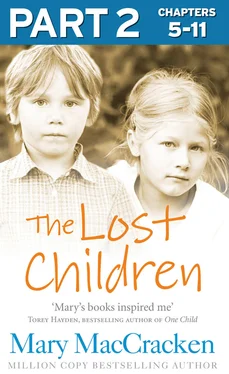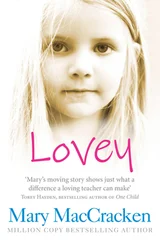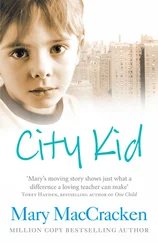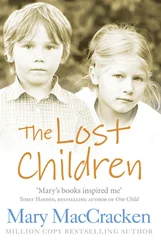It was hard not knowing what happened to the children when they left school. They did not speak, and so there was no way to learn from them.
Helga had been sure some of them were physically abused, and told me of visiting one family unannounced and finding the boy chained to a doghouse in the high-fenced backyard, his food and water on the ground.
But if some parents were cruel, others were kind and devoted, making unbelievable sacrifices for the special child within their home. Schizophrenic children are classically poor sleepers, refusing to go to bed, haunted by nightmares; and often the parents slept in shifts, keeping watch over the child who controlled their home. This schedule slowly eliminated sexual relations or even friendship between the parents. The children could be tyrants, and their houses could become filled with the hate common to tyranny.
To me the amazing thing was that the parents managed as well as they did – and that any teacher or outsider would presume to judge them. After all, we worked with the children five hours each day, from nine-thirty in the morning until two-thirty in the afternoon; but the parents were with them the other nineteen hours without relief as they tried to care for their children and accomplish other chores as well. I felt compassion and admiration for their courage, and I often longed to reach out and put my arms around them as well as the children – not so much to care for them as to say what I could not put into words. I was not sure that I would have been as strong as they, had a child such as this been born to us. For more and more it seemed to me that there must be a chemical imbalance in at least some of these children – and who could say which ones?
But my job was not research. While I might hope for answers from the laboratories, still there was this day, this hour, when answers had not yet been found and my own job was teaching. I believed then and I believe still in the day school for emotionally disturbed children. There are valid reasons and occasions for residential settings, but whenever possible I believe the child is better at home with his parents. However, if the child is to go home to these parents each afternoon, then parent and teacher must try to work together.
And this was often difficult. To begin with, many of these parents had been hurt so often, lied to so much, accused of so many things, that their own defenses were high – or their own hopes had been abandoned and they had settled into what was easiest.
With Brad, for example, it was difficult for his mother to agree to leave the baby bottles and diapers home; and it was an important day for both of us when she brought me six pairs of white cotton training pants for him as a gift.
For I had set my goals. I was not a psychiatrist or even a trained teacher yet, but I was a mother and I had raised my own children. It seemed to me that if in those weeks while Joyce was absent I could teach the children to take care of their bodily needs – eat, go to the bathroom by themselves, dress themselves – and to communicate a little, I would have helped.
Zoe told me later how impossible my goals were – but because I was new, alone in my room at the far end of the hall, and had no one to tell me otherwise, I did not know it.
And so I bought five small plastic glasses and began. Each day after Circle we sat at the pink table and drank juice and ate cookies. At first they tipped over the glasses, dumped the juice upon the floor, threw the cookies; but they liked the sweet apple juice and the soft sugar cookies, and I would not let them have them unless they sat with me at the table. I wanted them to get the feeling of having a place where they felt safe. I knew no better way than to feed them there.
We also stripped. There alone in our bare classroom I took off their clothes. Not Louis – even I knew that he had left us, was now beyond reaching. But I took off the clothes of the other three piece by piece and taught them to put them back on by themselves. For a half hour or more each morning we worked on learning to get dressed and undressed. I took off three pairs of shoes, three pairs of jeans, three pairs of diapers. I laid out three pairs of cotton training pants – one on Brad’s chair, one on Billy’s, one on Chris’s. I worked with whichever one I could capture first, sitting him on the floor in front of his chair, guiding his hand to the underpants, then pushing him forward, laying the pants out on the floor in front of him, then bending first the right leg, aiming the right foot for the proper hole, then the left leg.
Standing him up, I’d hook his thumbs beneath the elastic at the top of the underpants and pull them up, and then, finally, I’d release the child and capture another and begin again.
And somehow, it did not seem like drudgery. I was, after all, in bodily contact with the child the whole time, touching him, helping him learn. And I knew, without really knowing it, that this touching was my own best way of communicating with these children. There are other ways for other people, but I could almost hear the children through my fingertips, and I think I also spoke to them.
That was all I asked for in the beginning, just the underpants. But I did not set our table or pour the juice until all the underpants were on.
For Chris, this was merely relearning. I had seen him put on and take off his own jacket, even his shoes, dozens of times in Helga’s classroom. I knew he had not “regressed”; there was too much intelligence in his laughter, in his willful disobedience. It was a matter of getting through again.
Brad learned to manage both underpants and jeans – he could not get past his stomach to his shoes and socks.
Billy was much slower, finally able to pull on his underpants with help. I never got as far as taking off his shirt.
I was happy and totally absorbed. I loved being on my own with the children; they were making progress, I was sure of it – and now I understood Helga’s reaction to having volunteers. I was glad the Director did not visit my room, grateful that no volunteer or aide had been assigned to us – just the children and myself. Without interference of adult words in the room, I could hear the unspoken words of the children – their rage, their refusals, their protests, their pleas, their questions, compliance, or excitement.
I stopped taking the class to the lunchroom for the noon meal. There they had been allowed to eat what they liked, Chris roaming around, snatching food from other plates. It was not that the school or Joyce was lax: I felt then and I still feel that of all the schools I’ve seen – and there have been quite a few now – ours was one of the finest. It was not that they were lax; it was that these four children of Joyce’s were so difficult. They were in many ways more like small animals – some wild, some tame – than like human children. Because the other children in the school were more advanced, though perhaps as sick in their own way, the other teachers were more tolerant of these four. Asking less, making fewer demands.
But I did not want this. If I accepted it, or allowed the children to, it meant that I did not believe they could improve; and if this was so then we were without hope. And it was necessary to hope; more than necessary – it was essential. On this I built my own new creed. I believed in the children.
Конец ознакомительного фрагмента.
Текст предоставлен ООО «ЛитРес».
Прочитайте эту книгу целиком, купив полную легальную версию на ЛитРес.
Читать дальше












